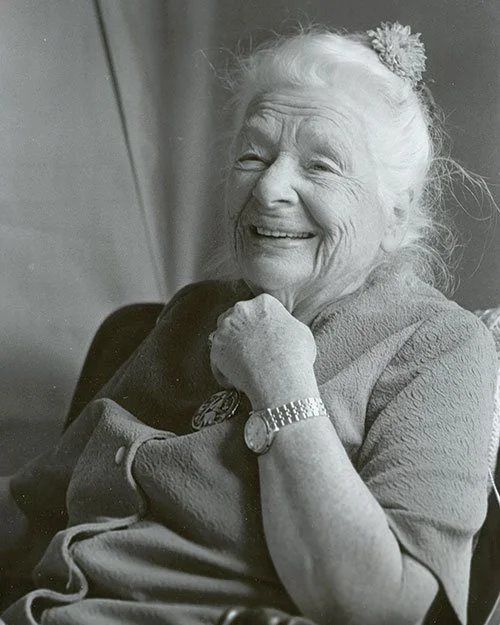Rolfing Structural Integration
“An effective human being is a whole that is greater than the sum of its parts.”
-Dr. Ida Rolf
What is Rolfing?
-
Rolfing is a type of manual therapy that combines soft tissue manipulation and movement education to bring the body into balance.
Today it’s a cliche to say everything is connected, but in Rolfing we think of the body and mind not just as connected but as one. What makes Rolfing unique is not only how it addresses the body, but also how it addresses our own perspective and understanding of how our body works. We often find that it is this awareness and agency that is the key to initiating true and lasting change.
-
The Ten Series is at the heart of Rolfing. Developed and taught by Dr. Ida Rolf, this tried and true framework allows adequate time to fully address the entire fascial system of the body. The Ten Series consists of ten sessions spaced out anywhere from 1-2 weeks apart. Each session focuses on a different area of the body and how it relates to us as a whole. Sessions 1-3 are referred to as the Sleeve Sessions, 4-7 are the Core Sessions, and 8-10 are the Integrative Sessions. To inquire about receiving a Ten Series, contact Lorraine directly by phone or email.
-
The Ten + 3 Series consists of a traditional Ten Series plus three Rolf Movement sessions interspersed throughout the series. As Rolfing targets structural change and Rolf Movement targets functional change, the Ten +3 Series is the best of both worlds. As we work to loosen structural restrictions in the myofascial system during your Rolfing sessions, you will immediately be able to discover new patterns of mobility with your Rolf Movement sessions. If you’re interested in receiving a Ten + 3 Series contact Lorraine directly through phone or email.
-
When the body undergoes strain, either in the form of physical labor, intense exercise, a traumatic event, or sitting and standing for long periods, the body will lay down more collagen fibers in an effort to support. Especially if there is repetitive strain occurring, these fibrous areas will thicken and become tougher. Under these circumstances, the body will compensate with a limiting posture and decreased range of motion, which in turn often leads to a variety of types of pain and tension. For many people, it would be difficult to stretch or strengthen our way out of these patterns of strain, especially after a lifetime of holding and moving our bodies in certain habitual patterns.
-
Rolfing works by breaking up the dense collagenous fibers that build up between layers of tissue due to repetitive or traumatic strain. When these layers can glide and move easily between and around one another, mobility is increased and discomfort often dissipates. During and after a Rolfing session, integrative movement education is instructed so that you can explore new and healthier patterns of motion while leaving behind old habitual patterns.
-
Fascia is connective tissue. It wraps, connects, and organizes everything in the body. The bones, muscles, organs, and nervous system are all held and enabled to function by a complex fascial network. The fascial support network is like the scaffolding of the body, only unlike scaffolding it should be able to move, stretch, shorten, and twist, as well as support. It should both differentiate the parts of the body, as well as integrate them into one whole system that is working fluidly together.
-
Rolfing vs. Massage
Although many people find the deep tissue work of Rolfing very relaxing, it’s more participatory than massage as clients will be asked to move positions, take deep breaths, and complete subtle and gentle movements throughout the session.
What to Wear
It’s optimal if clients are comfortable wearing either their underwear, a bathing suit, or sports attire during a session. Clothes should allow access to the tissues but be comfortable to move around in. That being said, your comfort is the most important thing, and I can work through layers of clothing if necessary.
Assessments and Tools
Work is done on a traditional massage table and on a Rolfing bench. Clients are asked to complete a few assessments, such as walking, breathing deeply, and bending the knees before and after each session. During the actual structural work, I’ll be using my hands, knuckles, forearms, and elbows.
Depth of Pressure
In Rolfing the touch is firm and we access deep structures within the body, however the pressure should never hurt and clients are encouraged to communicate about how the quality of touch is being received. It is not effective to use a pressure that is painful to a client. As Ida Rolf said, “It isn’t how deep you go, but how you go deep.”
Integrative Homework
After a session is complete I’ll give some integrative homework so that you can continue learning about your body and the way that it moves long after you leave. This homework is very gentle and accessible to everyone.
-
Rolfing is named endearingly after it’s developer and founder Dr. Ida P. Rolf, a biochemist PhD from Columbia University. As early as the 1940s, Dr. Rolf began developing a type of bodywork which she later called Structural Integration. Searching for an answer to her own health afflictions, she found inspiration in Osteopathy, Yoga, Meditation, and many other forms of healing arts. She spent the rest of her life dedicated to understanding the complexities of the human body and developing Structural Integration and the Ten Series.
Her students began calling the work Rolfing. Dr. Rolf eventually founded the Dr. Ida Rolf Institute. Today there are many schools of Structural Integration and Myofascial Release programs, but they were all developed from Dr. Rolf’s original teachings. The title Rolfing and Rolfer are reserved for those that have attended the Dr. Ida Rolf Institute in Boulder, CO and have learned her original Ten Series of Structural Integration.


